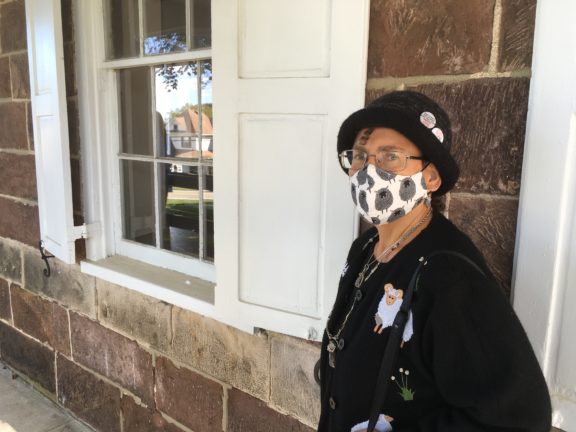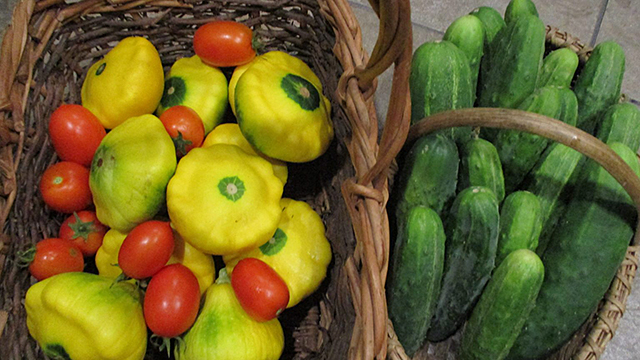
This is part III of our story about a Quaker farm and a Quaker Meeting in Quakertown, NJ.
In this final section, Quakertown Meeting attender and farm owner, Marty Campanelli brings us into the year 2020 with news of the Potter-Allen-Vail farm during the 1929 stock market crash (Herbert Hoover, an Iowa Quaker, was president), the creation of a local scout troop by Willis Vail, the planting of 1000 Christmas trees, and wool Marty now harvests for local crafters.
Willis Vail’s local impact
The Potter-Allen-Vail farm stayed under Quaker ownership until 1934 when Willis Vail and his wife Belle had to sell for financial reasons. Willis was in debt due to investment losses from the 1929 stock market crash.
Under Willis’s tenure, the farmer sharing the house and running the property, managed fields of grain, a large henhouse, and an orchard of fruit trees. Willis planted black walnut trees in the woods along the stream, as well as Kentucky coffee trees around the house (the tree is known for beans that produce a coffee-like beverage). While working as an engineer in the early 1900s, Willis sent coffee tree seeds from Virginia and his farmer planted and nurtured them. His diary detailed moving the young trees to specific locations around the property. (One of these 90-ft. beauties came down during Hurricane Sandy, crushing a portion of the garden fence, and we were devastated!)
Local teenage boys vandalizing the fruit orchard prompted Willis to start his own personal mentoring program in the 1920s. He began by helping the boys with their math and science homework, and teaching them surveying, as well as other useful skills. He then started a group called the Quakertown Chums. The Chums camped in the woods and performed skits for their parents. Willis took classes in becoming a scout leader and the Chums morphed into the first scout troop in the area.
After the Vails and their farmer moved out, Willis and Belle downsized to a smaller property on the other side of the village, still close enough to care for the Meetinghouse property. The 20-acre farm then went through a series of owners, the longest of whom lived there from 1940 to 1978. The land still produced crops, and the 1940-78 owner also bred dogs. In 1978, that owner sold the farm to investors and the 20 acre parcel was subdivided, leaving 8.5 acres with the stone farmhouse, and the remaining acreage was split into small building lots for new homes.
The next owner of the farmstead, from 1980 to 2005, raised pigs in the woods along the stream and allowed a local farmer to grow crops, then in 2000, he decided to plant 1,100 tiny Christmas trees.
The trees grew, but the farm was again sold.
Our residence on the Farmstead begins
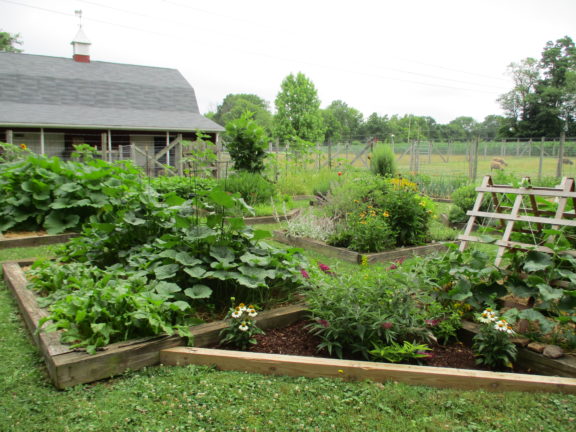
When my late husband and I moved here in 2005, we had no plans to operate a Christmas tree farm, so we moved some of these young trees to our hedgerows, sold a portion to landscapers, and gave a quantity away to scouts, parks and local municipalities.
We had fencing for the garden and pastures installed. Once again, like the olden days, a farmer grows field corn on our land, the sheep have nice pastures for grazing, and the garden produces an abundance of vegetables and herbs.
The 52-ft square fenced in garden between the house and the barn boasts eight large raised vegetable beds.
Crops such as cucumbers, squash, string beans, sugar peas, beets, tomatoes and onions are rotated amongst these beds every year. This summer there was an abundance of patty pan squash and cucumbers!
Four smaller beds in the center feature perennial herbs and flowering plants to attract bees. Daylilies planted around the perimeter add joyful color all summer, and newly added triangular sections host butterfly bushes and white cone flower.
I harvest these to stock my freezer and give away to friends, and donate the rest to the local food pantry.
This year I harvested 500 cucumbers, last year I brought in 600!
The Farm remains a place of abundance
I’ve kept the farm as a place that is home to more than just humans. The area along the stream is kept wooded so that various critters may find refuge and shelter to their taste.
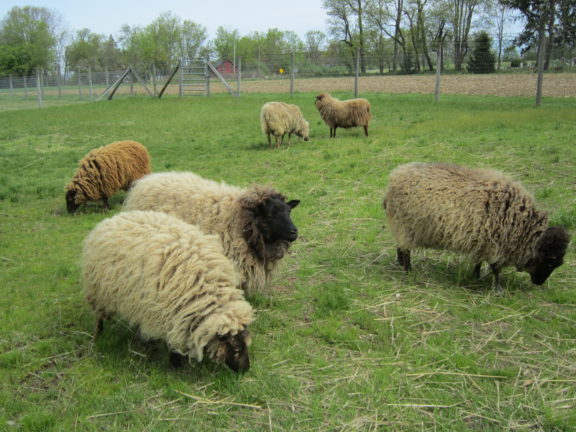
My six Shetland ewes are small, only about 100 lbs. each, but their fleeces are long and luxurious. They help the farm by keeping the grass down in one of two small pastures.
Shetlands come in eleven colors and twenty-two color variations, making their long and wavy fleeces a treat for hand spinners. Right now I just give the wool away to knitters and other friendly people, like the North Country Spinners. They use the wool for spinning and knitting demonstration projects at schools, historic sites and fairs in northern New Jersey.
A member of this group recently crocheted me a shawl from one of my ewe’s fleece, and then sent me three skeins after she learned I too was now knitting. I try to make some items that I then give to Mercer Street Friends, a local Trenton non-profit and food bank many Friends in the area support.
Full circle: Quakertown Meeting becomes a part of my life
Over the years, my husband Dan (who was an artist) and I helped the Meeting out with various historical projects, and attended some of their potlucks, but did not attend Meeting for Worship. After he passed away in 2017, Dan’s memorial was held at Quakertown Meeting, with about 170 persons attending.
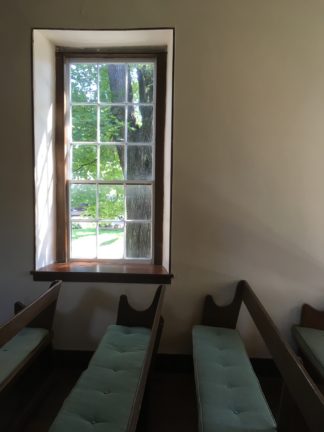
I felt drawn to attending Meeting for Worship regularly and as a regular attender I have even been placed on some committees. Last July I was asked to take over as Recording Clerk.
I find attending Quakertown Meeting rewarding for its sense of community, all the new friends/Friends I have made, and I share many of its values. I strongly feel that the farm, and its occupants over time, have come full circle—back to being linked with the Friends Meeting in the middle of Quakertown, New Jersey.
Story by Marty Campanelli
